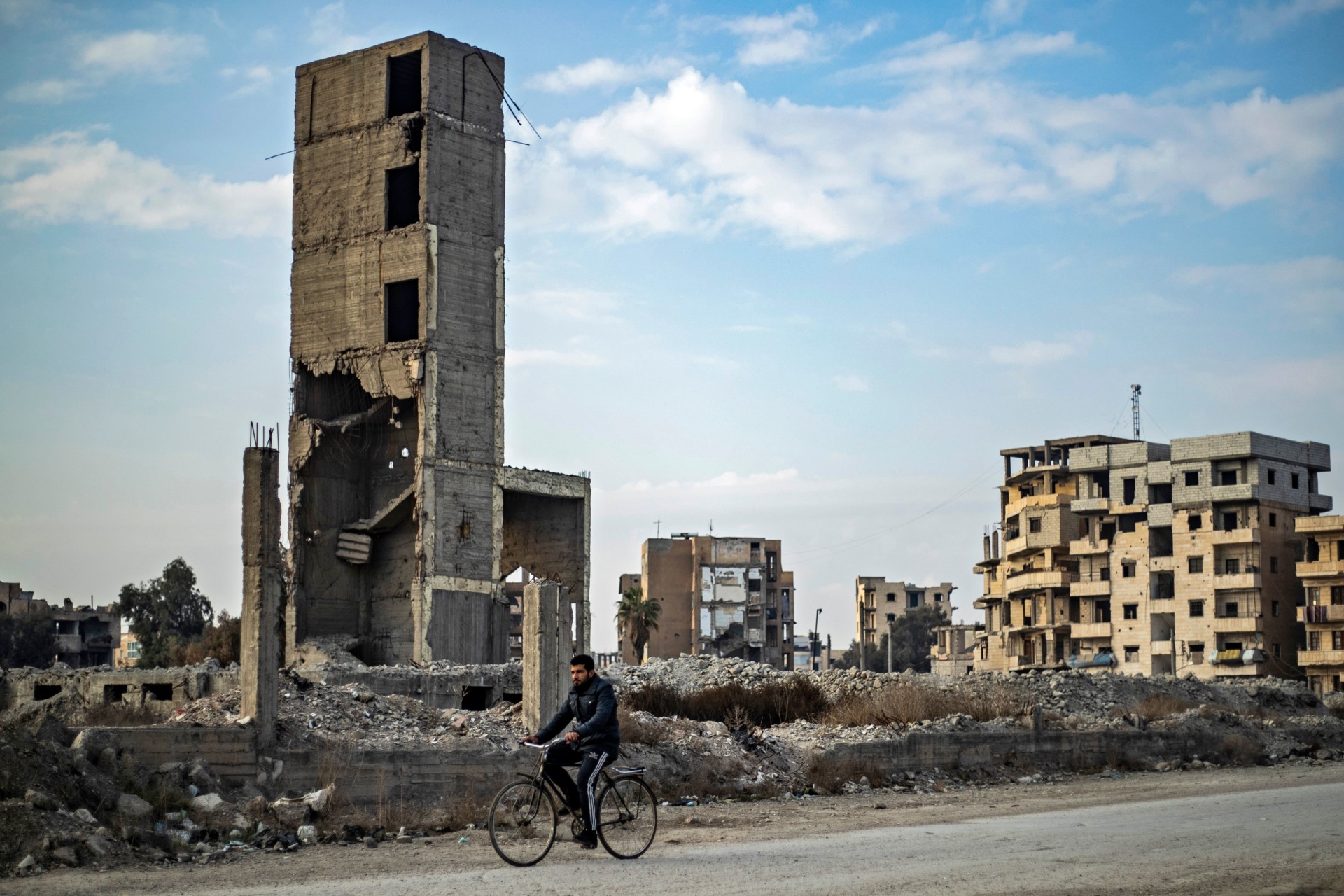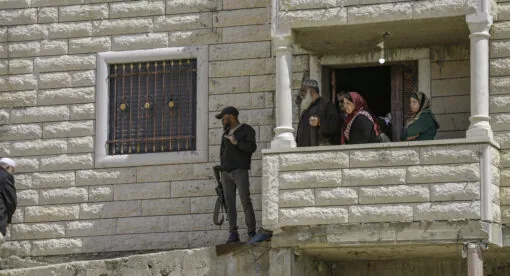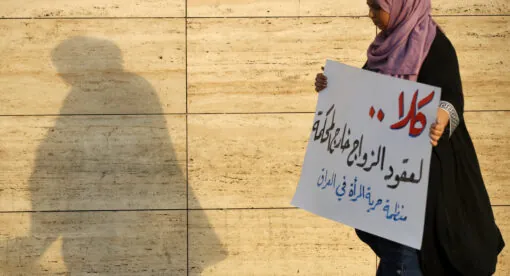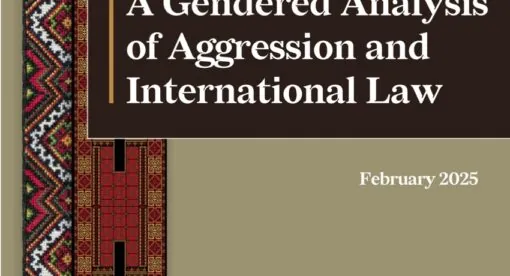ISIS became more active in central Syria last year, adopting new tactics and new targets. The United States will need to consider these changes in determining its commitments in Syria.
The Islamic State (ISIS) has greatly increased its capabilities in central Syria over the past year, expanding its area of operations from the heart of the Syrian Badia north to central Aleppo province, west to Salamiyah, Hamah, and southwest to Qaryatayn, Homs. In 12 months, ISIS cells conducted at least 286 attacks – including 94 high-quality attacks. According to loyalist social media and fighters whom the author interviewed, during those 12 months ISIS attacks killed at least 432 pro-regime fighters and 41 civilians and injured more than 211 people.
ISIS cells carried out at least 24 assassination attempts over the last 11 months of 2020, killing 24 pro-regime military commanders and wounding three others. Among the dead were Russian Maj. Gen. Vyacheslav Gladkikh, an Iranian Revolutionary Guard Corps general, commanders of a Syrian Arab Army regiment as well as a battalion, a brigadier-general and a colonel in the Republican Guard, and five sector commanders in Deir ez-Zor. These sector commanders – three from the National Defense Forces (NDF) and one each from the 4th Division and Air Force Intelligence – led all of their respective units’ activities across a large swath of the province.
There are three key metrics by which the scale of ISIS attacks can be evaluated: geography, lethality, and complexity. ISIS attacks grew in all three factors throughout 2020, doubling the number of attacks and of pro-regime fighters killed and tripling the number of high-quality attacks compared to 2019. Nowhere were these gains more apparent than in Hamah province, which had almost no ISIS presence at the end of 2019 but was enduring regular high-quality attacks by fall 2020. Furthermore, the Syrian regime and its allies have shown no ability to halt this trend, with ISIS all but guaranteed to further escalate across all three metrics in 2021. Amid a rocky transition between U.S. administrations, a strengthened ISIS in central Syria escalates the threat to Washington’s allies in northeast Syria and Iraq.

Measuring ISIS’s Success
The first quarter of 2020 continued the trend that began in December 2019: The vast majority of ISIS activity was focused in Deir ez-Zor and Homs provinces while some cells carried out intermittent ambushes in southern Raqqah province. ISIS likely used this period to begin solidifying its hold over the empty villages dotting the plains southwest of Resafa. This area appears to have then served as a base from which cells launched attacks into northeast Hamah later in the year.
In this earlier period, ISIS focused on ambushes and assassinations across much of Deir ez-Zor province and, to a lesser extent, raiding Syrian Arab Army positions near Sukhnah, Homs. The first notable jump in attack geography and complexity occurred on April 10, when an ISIS unit pushed deep into territory nominally controlled by Damascus and attacked the village of Rahjan near Hamah’s border with Idlib province. In order to carry out this attack, the ISIS fighters had to have moved close to the city of Ithriya, a major regime transit nexus connecting the Aleppo-Damascus and Raqqah-Damascus highways. Two days later, ISIS targeted the vehicle of an IRGC general and a Syrian militia commander with an IED just south of Ithriya, wounding the general and killing the militia commander. ISIS’s ability to freely move in this area both before and after the attack, as well as its knowledge of the commanders’ movement, served as the first strong indication that the group has significant local knowledge and potential support from parts of the local population.
One month later, on May 10, ISIS assassinated an IRGC general near Ithriya, again using an IED. On June 10, ISIS further expanded its presence in east Hamah by seizing two hamlets near Uqayribat, south of Rahjan, holding them for 24 hours before withdrawing under airstrikes.
More Attacks, Diverse Tactics
The second half of 2020 saw increasingly frequent ISIS attacks and seizures of villages across east Hamah, from south of Uqayribat to north of Ithriya. Rahjan, the site of the first major ISIS attack in the province, has become a regular target for at least one approximately 50-man cell of ISIS fighters. ISIS has targeted the area around the village at least once a month since August, including two three-day battles in mid-October and mid-December. In both attacks, ISIS fighters were able to withdraw on the third day despite Russian and Syrian airstrikes and the villages’ locations (allegedly deep within government territory).

Just as important is the little-discussed activation of ISIS cells in central Aleppo province. These cells appear based in the plains south of Khanasir, where they use the empty hamlets and dirt roads running from southern Raqqah province – also under ISIS control – northwest to the Shubayt Plateau on the eastern edge of Khanasir. Beginning in July, these cells regularly attacked Syrian Arab Army outposts in the area and occasionally laid mines and IEDs along the Khanasir highway. This activity peaked in July but has remained steady through the fall and into the fourth quarter of 2020.
South of here, ISIS cells began a sustained campaign along the Ithriya-Tabqa highway. The first such attack occurred in August, when several soldiers were killed and wounded by a mine on the highway followed by a sustained firefight at the Anbaj junction, just south of Tabqa. One month later, a group of ISIS fighters overran an NDF checkpoint at the Zakia junction. In November, ISIS fighters employed a tactic that had only been used in the core Badia before: Within one week, ISIS set up at least three fake checkpoints along the Ithriya-Tabqa highway, killing at least seven civilians and soldiers. Militants continued to harass passenger buses here with small arms fire in December, marking a precipitous decline in security along a crucial trade route that has only recently reopened to commercial traffic.

The third quarter of 2020 set the stage for these later attacks. July saw the first wave of ISIS attacks around Khanasir, Aleppo, followed by the beginning of sustained activity in northeast Hamah province in August and September. These attacks in northeastern Hamah, occurring near Highway 42 from Sa’an to Resafa, appear to have been conducted by cells distinct from those in southeast Hamah. Based on timing, it seems the northeast Hamah attacks were carried out by the cells in southwest Raqqah or cells related to them, while the southeast Hamah attacks were carried out by cells based in the mountains north of Palmyra.
In the last quarter of 2020, these northeast Hamah cells increased both the complexity and frequency of attacks. Such attacks included a successful raid on a Syrian Arab Army weapons depot (Oct. 6), a three-day battle near Rahjan (Oct. 22), the destruction of a base and killing of 15 soldiers just outside Ithriya (Nov. 11), fake checkpoints on the Salamiyah-Raqqah road (Nov. 13), and another three-day battle near Rahjan (Dec. 14). In fact, October and December were the first months since the beginning of the ISIS insurgency in which more high-quality attacks and more attacks in general were carried out in Hamah than in any other province. The December uptick came despite the increased presence of security forces in the area following the series of major ISIS attacks in November.
In the meantime, ISIS activity around Palmyra, Homs, has increased steadily since August. The third quarter of 2020 saw a widespread use of mines and IEDs along the roads outside Palmyra, along with a particularly brazen attack on the T4 Pumping Station. This station is located just outside the Tiyas Military Airbase, 35 miles west of Palmyra. The attack here on Aug. 4 marked the first major military activity in the heavily urban area of eastern Homs province.
Fighting around Palmyra continued escalating in the fourth quarter, with ISIS shifting from mines/IEDs to small-arms attacks. On Oct. 2, the group set up a fake checkpoint outside the city of Qaryatayn, more than 60 miles southwest of Palmyra. The checkpoint triggered hours-long clashes, yet the cell was reportedly able to withdraw with minimal losses. In late November, what was likely the same cell overran a large Syrian Arab Army outpost in the Jabal Abtar area southwest of Palmyra. The next day, ISIS fighters attacked the western outskirts of Palmyra, engaging with both Syrian Army soldiers and members of the Russian private military firm, the Wagner Group.
Both the Qaryatayn and Jabal Abtar attacks occurred along the two main highways from Damascus to Palmyra. Security along these vital highways in both Homs and Hamah provinces has declined so rapidly that major pro-regime businessmen are reportedly personally funding new, high-salary security contracts. Many of these new contracts have been shared in loyalist Facebook groups, offering as much as 175,000 Syrian pounds per month for work “guarding oil wells” along the highways, jobs which this fall paid just 75,000 SYP. Loyalist oligarchs stepping in to fill security vacuums is nothing new, but this serves as an important reminder of the incompetence and dysfunction of the Syrian army and allied militias tasked with securing this region.
Meanwhile, ISIS pressure on the city of Sukhnah remained consistent through most of 2020. IEDs and mines, raids on checkpoints, and harassment of pro-regime patrols were commonplace around the city itself, as well as the mountain passes to the north. Notably, a combined NDF and Wagner force was forced to withdraw from the Kawm Oasis, 20 miles north of Sukhnah, a week after arriving there when a large ISIS force came close to surrounding them. The oasis was then ceded to ISIS control again.
It is important to note that ISIS media relating to central Syria has been limited and sporadic throughout 2020. Attacks are rarely claimed, with many significant operations going unnoticed. This has led to a consistent underestimation of ISIS’s capabilities in this arena, as many analysts rely on simply tabulating ISIS claims to assess the group’s strength. A major report published in November argued that ISIS activity in Syria had steadily declined over the first half of the year, with the group entering a “status quo.” Such assessments are directly contradicted by accurate data from local sources, and even testimony from an ex-Wagner fighter with extensive combat experience in the Badia.
Problems Among Regime Forces
In Deir ez-Zor province, regime sector commanders play important roles in facilitating ISIS’s weapons and human smuggling across the Euphrates River. According to one NDF fighter interviewed by the author, “Every commander in the province has a way to communicate with ISIS.” This situation reached its inevitable conclusion when ISIS fighters ambushed and killed the commander of the 17th Division’s 137th Regiment in mid-November. It is widely believed that the militants acted on intelligence passed to them by the recently appointed head of the NDF’s Mayadeen Sector. This betrayal was the culmination of nearly two years of political fighting between the Deir ez-Zor NDF center and the 17th Division.
Regime incompetence also played an important role in facilitating ISIS expansion in east Hamah. Following increased attacks around Rahjan in the fall, the Syrian military leadership deployed members of the 5th Corps’ 7th Brigade to the area. This brigade is well known to be the 5th Corps’ most weakly armed and poorly trained brigade, and it has long been headquartered 150 miles to the east in Deir ez-Zor. The 4th Brigade, on the other hand, proved itself to be a competent fighting force in the late 2019 Idlib offensive and is headquartered just outside Salamiyah, only 30 miles from Rahjan. Yet the 4th Brigade has reportedly refused to deploy, claiming its units are too busy “training.”
The 7th Brigade, on the other hand, manned largely by men from eastern Syria and those reconciled with from the south, did not have the political power to turn down the deployment command. The consequences were immediate. According to one fighter recently deployed nearby, 7th Brigade field commanders falsely claimed to be holding the villages stretching from Ithriya to Rahjan. In reality, the army had no presence here, allowing ISIS militants the freedom to coordinate and plan major attacks, such as the three-day battle around Rahjan in mid-December. Following this battle, regime security forces again claimed to have secured the region between Ithriya and Rahjan, only for ISIS to carry out another major attack in this exact area two weeks later, on Jan. 3.
The ingrained corruption within the security forces, combined with the high command’s incompetence and general lack of competent fighting forces, has left the regime to conduct so-called “combing operations” in order to try to counter ISIS. These operations are often undertaken by single units, such as a Liwa al-Quds detachment or local NDF garrison, driving through empty hamlets for as long as two weeks before returning to base. During such operations, ISIS cells either withdraw to a nearby region or engage in IED and harassment operations. Months with widespread combing operations often result in a high number of overall attacks but a lower-than-average number of high-quality attacks, such as in May, July, and December.
At best, these operations delay ISIS activity in specific areas for several weeks. More often, cells appear to shift to another area where they conduct attacks at the same steady rate. One noticeable change in the regime’s strategy in the last quarter of 2020 was the large uptick in airstrikes. Where the Syrian and Russian air forces were once absent, strikes are now common occurrences in Raqqah province, eastern Homs, and Deir ez-Zor’s countryside. In recent months, it has even become possible to track attacks in Raqqah through the occurrence of airstrikes. Of course, because these strikes come after the cessation of fighting, they have had zero impact on ISIS’s ability to operate. While details about these airstrikes are sparse, it is clear that most of the strikes are against static, predetermined targets. Close air support, a crucial part of any counterinsurgency operation, is all but nonexistent.
So far, there are no indications that the regime will change this futile strategy in 2021. After the Dec. 30 attack on the Palmyra-Deir ez-Zor highway that killed more than 30 soldiers, local security forces again conducted a series of ineffectual sweeps around the attack site. If this attitude continues, ISIS will only gain more ground and operational capability.

Forecast
Looking to the next year, there are several feasible and important benchmarks for continued ISIS expansion:
- Deir ez-Zor
- Targeting of civilian leaders, particularly tribal sheikhs
- Successfully carrying out attacks inside major cities, such as Deir ez-Zor and Mayadeen
- Homs
- Sustained pressure in southern Homs, particularly around Qaryatayn and the Damascus border
- Successfully raiding the cities of Palmyra or Sukhnah
- Raqqah
- Sustained non-IED/mine attacks concurrent to similar attacks in Hamah province
- Carrying out attacks inside major cities, such as Maadan and Sabkha
- Hamah
- Non-IED attacks on the cities of Ithriya, Uqayribat, or Salamiyah
- Targeting civil society leaders.
- Aleppo
- Sustained (more than once a month) activity in the Khanasir area
- Connecting the Khanasir and northeast Hamah areas of operation
- Use of fake checkpoints on the Ithriya-Aleppo highway
- Generally
- Return to attacks in Suwayda province, as seen in July 2018
- Attacks in Damascus city
- Use of SVBIEDs anywhere in the Badia
- Further development of local-insurgent relationships, particularly for intelligence gathering and trade
Recommendations
It should be noted that while ISIS is clearly continuing to expand and strengthen in central Syria, the group is still far from taking and holding major urban centers. While cities like Palmyra and Sukhnah will undoubtedly face increased threats over the coming year and may indeed endure raids deep into their city limits, ISIS has no incentive to attempt to capture them. The absence of “useful” territory held by ISIS will only further encourage Damascus to ignore the insurgency.
As questions over the United States’ military commitment to northeast Syria and Iraq persist, it is imperative that the new administration heed the lessons of the Badia insurgency. The Syrian regime and its Russian and Iranian allies, lacking technological ability, funding, and localized counter-insurgency experience, are wholly incapable of reversing ISIS’s gains. Damascus’ weakness has allowed ISIS to use the Badia as a “rear base” and training area for operations in northeast Syria and Iraq, in a similar role as the Anbar desert served prior to the group’s return to Iraqi cities.
As ISIS’s strength grows in regime-held Syria, it will seek to further rebuild its networks and operational capacity in northeast Syria and Iraq. A strong U.S. military presence in these areas is the only way to counter this resurgence. Without this, local partners will fail to contain the burgeoning insurgency. Worse yet, a potential U.S. withdrawal from northeast Syria will result in the complete return of regime and Russian political and military control, and with it the very system of corruption and incompetence that has enabled ISIS’s rapid expansion in central Syria.
Gregory Waters is a non-Resident Scholar at the Middle East Institute and a research analyst at the Counter Extremism Project. His work focuses on the Syrian regime’s security forces, primarily utilizing open source research to assess the capabilities and structure of the Syrian Arab Army and allied militias. He has also written about local governance initiatives in opposition, Turkish, and regime-held Syria and tracks Islamic State developments in central Syria. He has previously been published by the Atlantic Council, Bellingcat, openDemocracy, and the International Review.
The views expressed in this article are those of the author and not an official policy or position of the Newlines Institute.






